
Let’s be honest, social media is a jungle. Forget about the flood of apps, integrations, and add-ons, just figuring out which network you should invest in is overwhelming.
What if you could ask today’s most influential online marketers one question: “What social media tool is your all-time, desert-island, can’t-live-without favorite?”
That’s exactly what I did.
What follows are – by any list or metric – 50 of the biggest names in online marketing, their top social-media tool (after the infographic) … and why they love it.

Click to see the full infographic and list made by Venngage
1. Neil Patel: Entrepreneur and influencer, NeilPatel.com
“With BuzzSumo you can see what is hot in your space on social media and what isn’t. From there you can craft ideas on the type of blog posts you should write to generate traffic and leads. The best part about BuzzSumo is it also shows you who has shared the content so you can reach out to those influencers and ask them to share your content as well.”

2. Ann Handley: Chief content officer, MarketingProfs
“Instagram is my favorite social network because of its social storytelling simplicity. From fun personal accounts – like Small Chalk and Adam Padilla – to corporate brands, it connects more immediately and deeply with people than any other platform. I still haven’t forgiven them for introducing an algorithm. (Chronological was so much more in line with the ethos of the platform.) But I can’t quit you, Insta.”

“Right now in my career, I use social media as almost a pure response vehicle. And I won’t start any new social media apps, platforms, or tools until I’m 100% committed to it. My goal with Twitter (my favorite) is to keep in touch and communicate my appreciation to those people that support me. Once I built an audience on those platforms, my goals and execution changed.”

4. Sam Hurley: Founder, Optim-Eyez
“Start A Fire is one of my all-time favorite social media tools because it provides shared credit to both content publishers and the curators who spread their material. It’s very simple, quick to use, and integrates with other social sharing tools like Buffer. Your face will appear in a pop-up on the articles you share, along with a custom link where you can direct visitors back to your own best content.”

“Native video is the top reaching post type on Facebook and gets three times the engagement of link posts and two times that of photo posts. I love using Animoto’s gorgeous templates, themes, and stock music. Its new marketing builder tool also makes it super-duper easy to add text overlays – vital for sound-off autoplay videos in the Facebook News Feed because 80% of video ads on Facebook are watched with sound off.”
Native video gets 3x the engagement of link posts & 2x that of photo posts on #Facebook says @marismith.
Click To Tweet

6. Ed Leake: Managing director, Midas Media
“When you ask these types of questions, marketers often overlook one big aspect of social – native advertising. As a paid click and data guy, I love Qwaya because it allows me to treat and optimize Facebook as I would AdWords: robust campaign structuring, split-testing, and automation tool set. If CTRs drop or CPC jumps … pause it. Might sound simple, but when you’re managing big accounts and budgets, it’s a godsend.”

“SumoMe is a hybrid tool that’s a bit like a Swiss Army knife. It’s helped me thrive and survive in the wilds of the digital world by creating social-sharing buttons – onsite, SMS, Flipboard, and WhatsApp – and tracking my social counts on blog posts. The feature I really love is its Welcome Mat: a pop-up that captures emails. In less than 12 months, it’s collected over 40,000 email subscribers.”

8. Murray Newlands: Co-founder, Due.com
“Most B2B companies on social media are missing a huge opportunity. Staff, customers, and clients won’t post positive comments unless they love you. Beyond that you have to get proactive and make sharing easy. Oktopost’s amplify and collaborate features are built to do exactly that: internally and externally. But love has to be the foundation.”

“With the new Instagram algorithm change, consistently posting at the right time has become even more important. Grum makes it easier to upload, process photos, schedule, and add hashtags to the first comment from desktop. For hashtags, I use 80% fixed and 20% tailored. This gives my team more time to focus on real-time engagement, which is life or death on social.”
Consistently posting at the right time on #Instagram is important w/ algorithm change says @cammipham.
Click To Tweet

10. Jason Miller: Global content marketing leader, LinkedIn
“I like to keep things simple and streamlined: Less is more. So the tool that I use religiously is Elevate: LinkedIn’s employee advocacy tool. I use it to share, organize, and measure all the content I post across my main three social accounts: LinkedIn, Facebook, and Twitter. I share daily from Elevate and track engagements.”

“eClincher is a comprehensive social media dashboard along the lines of a Hootsuite, but it offers some unique functionality. The feature that I most love is auto post with queues. Basically, it’s a killer feature for companies who have lots of evergreen content and want to share it on a periodic basis across a wide variety of social networks. You can choose to post from your queue as often or as little as you’d like and stop sharing on a certain date, which is perfect if you are promoting an event.”

12. Ross Simmonds: Digital strategist, RossSimmonds.com
“My favorite tool is Venngage. As someone who really likes experimenting with the potential of visual content and visual communication, having access to an infographics tool that is so easy to use speeds up my visual output. Whether you are creating graphics for social, SlideShare, or a presentation, Venngage is super versatile and intuitive.”

13. Shane Barker: Digital strategist, ShaneBarker.com
“Quuu is a hand-curated and content-promotion platform. I use the promotion side to distribute everything. Each article is reviewed by a real person before it is approved because the goal is to promote only the highest quality content. Once the article gets the green light, Quuu adds it to its huge distribution network, which is cool, as I can then see the amount of shares and clicks for each article.”

“Twitter remains my primary social media platform. But alone, Twitter’s unmanageable. That’s why I use Followerwonk to understand who my audience is, when they are most likely to engage, and to find followers who overlap with similar social profiles and influencers. Their analyze feature – which integrates with Buffer – tells you exactly when to post your most important updates for exposure.”

15. Pam Moore: CEO and founder, Marketing Nutz
“I love using If This Then That (IFTTT) to enable native posting of images on Twitter that are originally posted to Instagram. You can set specific criteria by using hashtags or set it to post to Twitter automatically by default. IFTTT also offers a nearly limitless supply of social and cross-platform ‘recipes.’”

16. Andy Crestodina: Co-founder and director, Orbit Media
“This one is going to drive more traffic in less time than all your other tools combined. It’s like Buffer but it never runs dry. Posts scheduled in Edgar stay in rotation forever. Once you’ve vetted your best stuff based on historical data, set up Edgar to share on your network(s) of choice at least a few times per day. You just saved yourself six to eight hours per month at least.”

“Ever wish you had a 24/7 graphic designer to turn your social media ideas into gorgeous graphics? Then you will love WordSwag! It is a mobile application that turns your ideas, quotes, and content into attractive graphics that can be shared on Facebook, Instagram, and anywhere. In less than five minutes you have a high quality and visually appealing graphic that will make your followers think you have a graphic designer ‘on call.’”

“Right now, I’m excited about Huzza.io because it lets me broadcast a live, weekly show that features up to six guests at one time … and simulcast it to Facebook. The platform provides real-time interaction, screen sharing, and more. I think one of Huzza’s most valuable features lets users subscribe to your show. Now your followers won’t ever miss an opportunity to tune in!”

19. Ann Smarty: Founder, SEO Smarty
“Viral Content Buzz is my most efficient social media promotion tool. I use it to promote every article I write. It works by putting my content in front of social media influencers who share it on Twitter, Facebook, Pinterest, and StumbleUpon. The result is a huge boost in social media interactions and higher traffic for my content. You can see my personal case study here.”

20. Tommy Walker: Editor-in-chief, Shopify Plus Blog
“TweetDeck is so much more than a way to publish on multiple accounts. With all of the filtering capabilities and advanced search functionality, you can build several dashboards that give you a real-time pulse on your industry, competition, and popular content. For example, when someone shares content from my blog, IFTTT will automatically add them to a list, which I am monitoring on TweetDeck. When looking at that list, I can see everything else people who have shared my blog are sharing.”

“Organic reach on Twitter, LinkedIn, and Facebook keeps getting lower, especially as your following grows. The solution? Post your content more than once. Edgar allows me to create a library of content, a schedule for posting it, and then it cycles through the library. When it’s done, it starts over.”

22. Sujan Patel: Founder and CEO, Web Profits
“Social media is becoming more personal and customers are actually talking to companies. I’m not talking about comments or high-level conversations. I’m talking about customers ready to make a transaction. That’s why I love Facebook Messenger, Facebook has done a great job empowering business owners to communicate directly with their customers and with the introduction of bots, Messenger is going to have a big impact in the coming years.”
#Socialmedia is becoming more personal & customers are actually talking to companies says @sujanpatel.
Click To Tweet

23. Johnathan Dane: Founder, KlientBoost
“We’ve started using the LinkedIn Sales Navigator to reach out to decision-makers at companies that could be ideal clients. Once we’re able to pique their interest, then we ask them for a quick meeting … For lead generation, it’s phenomenal.”

24. John Rampton: CEO and co-founder, Due
“I really like Brand24’s dashboard to see every person that’s mentioned my brand on social media. I can then go and respond individually. This enables my brand to be on top of the good, the bad, and the amazing customers that are sharing feedback. You can even monitor your competition and take advantage of the potential customers out there that need your help!”

25. Steve Rayson: Director, BuzzSumo
“Keeping track and managing social mentions and messages is hard work. I love Agorapulse’s approach of helping you achieve inbox zero and that great feeling when you have cleared your messages. Agorapulse does more than bring together all your mentions and messages, it allows you to work effectively as a team to respond to everything.”

26. Nadya Khoja: CMO, Venngage
“Although Snapchat may not seem like the most trackable social media platform, it’s phenomenal for engaging with your audience and giving your followers a look behind the scenes at your company or personal life. The one measurable metric is views, so in order to keep them climbing, you need to be creative. Trust and advocacy are built on being an entertaining and useful marketer.”
Trust and advocacy are built on being an entertaining and useful marketer says @NadyaKhoja.
Click To Tweet

27. Gerry Moran: Global head of social media, Cognizant
“The key to every successful social media strategy is content that tells a story. However, the story doesn’t always get crafted in one sitting. It evolves from a collection of photos, animated GIFs, infographics, a line from a song, a saying from my grandmother, everyday pain points, scribbled design thinking on a white board, industry facts, etc. Evernote gives me a way to organize my storytelling making my social media strategy more successful.”
The key to every successful #socialmedia strategy is content that tells a story says @GerryMoran.
Click To Tweet

“Rival IQ is a terrific tool to compare your own social media engagement rate and top-performing content versus your competitors’. Insightful and easy to use, it includes automated, custom reporting. One click and BAM – you have a PDF or PowerPoint deck with all the information you need to make better social media decisions. We use it daily.”

29. Brian Dean: Founder, Backlinko
“Click to Tweet gives your readers an immediate and easy way to share your content by creating one-click boxes of preloaded Tweets, hashtags, and mentions. Blog integration is super non-technical and they even have a Click to Tweet generator you can use to add links to emails and PDFs. More opportunities to share equals more shares. It’s that simple. I recently used it on this post and got 20% more tweets than my average.”

30. Joanna Wiebe: Creator, Copy Hackers
“Buffer! Three reasons. (1) You can install a browser widget that lets you Buffer any page or image you come across to be sent out immediately or at a later time. (2) The Content Inbox: I can enter the URL of a favorite blog and Buffer instantly creates a huge list of tweets from that blog. (3) The company is so transparent. I don’t expect every company to publish what they earn vs. what they pay people the way Buffer does, but it’s a warm-and-fuzzy sort of approach to helping disconnected folks like moi see the humans behind a software company.”

“At the risk of following Joe Puluzzi, Twitter is also my favorite tool. However, I use it a bit differently than most by creating niche accounts to share and hone my evolving passions while creating community and influence – @TravelEsquire, @FinancialSM, @HealthcareSMM, @SocialMediaLaw1, @ChinaDigitalBiz, etc. Then I build Twitter lists to track key opinion leaders and the competition.”

“Canva is a very handy browser-based design tool that makes it super straightforward for non-designers like me to create impressive images. Visual content has become so important for social media posts to help tell the story of your post and content. I’ve noticed that my visual content gets about 23% more clicks vs. non-visual. I love the fact that I can optimize the size for whatever social platform I need to use the design for.”
#Visualcontent is important for #socialmedia posts to help tell the story of your content says @matthewtoren.
Click To Tweet

“Socedo is a fantastic tool that identifies new prospects on Twitter and automates engagement with them on your behalf. I use it to generate 12 to 15 leads per day by matching B2B marketing-related keywords with offers of our best practice guides. If you’re doing it right, social demand generation is like paid search without the media costs.”
If you’re doing it right, social demand generation is like paid search w/out the media costs. @heinzmarketing
Click To Tweet

“Sendible has most of the features you will find in other social media management tools: scheduling, automated sharing via RSS feed, analytics, team management, and keyword monitoring. What sets them apart is the number of networks they connect to: Facebook, Twitter, LinkedIn, Pinterest, Instagram (via email reminder), Google+, Tumblr, Medium, Instapaper, Pocket, Flickr, Delicious, Slack, and more.”

“Bit.ly is a must-have tool for your social media stack. The platform does more than just shorten links. You can use it to track links, measure performance from your campaigns, and learn which channels bring in the most traffic. I use Bit.ly to monitor the daily activity of all my marketing and growth efforts along with most of my clients so I can attribute and track my efforts.”

36. Everette Taylor: CMO, Skurt
“Instagram is a platform whose audience is growing fast, surpassing Twitter, and now has more users than Snapchat. Growing your brand and engagement on Instagram is becoming increasingly important. GrowthPup has been the most efficient tool to help grow my company’s Instagram account and engagement. It’s a completely hands-free experience, affordable, and you get real results … a marketer’s dream.”
.@Instagram’s audience is growing fast, surpassing Twitter, & has more users than Snapchat. @Everette
Click To Tweet

“Our largest social audience is on Twitter and perfectly geared for content distribution. To be a bit more narrow, however, we’ve had some luck with two Twitter add-ons: (1) Twitter ads and (2) Twitter-Medium integration. The price of Twitter ads has come down while the effectiveness of Facebook ads has waned. But the most intriguing thing I’m exploring is the Twitter follower integration with Medium, which is a content-driven social network itself. Publication owners can now connect their Twitter and Medium accounts to basically import followers and build reach.”

38. Rand Fishkin: Wizard of Moz
“Next to BuzzSumo – and without sounding biased – my favorite tool is Moz’s own Fresh Web Explorer. It’s great for setting up mention alerts as well as finding content to share socially through keyword notifications. The mention authority feature works directly with Moz’s page and domain authority metrics and helps sort through all the noise you normally get with catch-all monitoring tools.”

“I’ve been a big Buffer fan for the last two plus years. But Sendible has converted me because it incorporates more than five other tools I was using into one: from social scheduling (on steroids), to social-listening alerts, automated posting from an RSS feed, a built-in CRM, automatically recycling your chosen posts so that your content never runs out and loads more.”

40. Larry Kim: Founder, WordStream
“I’m big into audiences: figuring out what are the interests, behaviors, and demographics of your target customers. For this I use Facebook Audience Insights because it’ll tell you just about everything you’d ever want to know: job titles, education level, lifestyle, location, household information, purchasing behavior, and much more. By better understanding who your target audience is, you can more accurately create content that they’re likely to engage with.”
Understand your target audience to create #content that they’re likely to engage with @larrykim.
Click To Tweet

41. Scott Stratten: President, UnMarketing
“At the risk of being a curmudgeon, I don’t really have any favorite tools because I don’t use many. But I’m enjoying trying out Ripl right now. Visual content evokes emotion. And Ripl is the easiest tool that goes beyond static images and lets you create animated visuals to post in your channel of choice.”
42. Kevan Lee: Director of marketing, Buffer
“Pocket helps me batch all my social media reading. I can find interesting stuff, save it to Pocket, get back to work, then read it all later. Plus, it has some really smooth integrations with sharing directly to Twitter and Facebook or sending straight to Buffer. And it has its own recommendations area that might be one of the few remaining unknown areas to build a following and authority, not to mention collect content for curation.”

“Sophisticated marketers know that engagement is the most important (and hardest) metric to nail, and that’s where Post Planner comes in. It was built for engagement and gives you access to the most viral posts on Facebook and Twitter (regardless of your niche). Plus, it provides a huge list of status ideas. My favorite feature is the recycle button to load up evergreen content so it posts once a week or once a month … or whatever.”

44. William Harris: Founder, Elumynt
“The thing I love about Narrow is that it lets me scale my Twitter account intelligently. Rather than sitting at my computer, manually following everyone that tweets with a hashtag that I find relevant, Narrow is programmed to interact with hashtags, audiences of influencers, keywords and more, which allows me to stay focused on providing relevant content for my audience.”

“LinkedIn is great for prospecting. Before I do cold outreach, I look at the person’s profile and do as much research about them as possible. Simple touches like including common contacts, their job title, and past projects they’ve shared dramatically increase your chances of getting a response. Customize your messages and relate to them based on the information gathered. Above all, be personal not robotic.”
When doing outreach on @LinkedIn, be personal not robotic says @benjihyam.
Click To Tweet

46. Jon Morrow: Founder, SmartBlogger
“Being completely honest, our teams don’t do a lot on social media. Most of our traffic comes from search, so that’s where we put our time and energy. We use BuzzSumo, Canva, and Yoast. However, given that my goal with social is simply to stay active – and to get the most out of the investment – Buffer is my go-to tool for scheduling updates. It’s easy to use, time efficient, and covers all my social-media bases.”

“In social media, relationships matter. Repost is a simple yet effective tool that takes the challenge out of engaging with others by sharing content while giving credit. The app gives brands an opportunity to tell their story with user-generated content – creating a positive emotional experience, building consumer loyalty, and securing customer retention.”
In #socialmedia, relationships matter says @moninaw.
Click To Tweet

“The tool that I love is Crowdfire. For $10 a month, I can follow the most engaged followers of people in my industry (Neil Patel, Jeff Bullas, etc.) and because those top influencers have a large following of readers many of them convert and start following me. I can use an automatic DM feature to A/B test some of my most popular articles, which drives traffic to my website and gets me leads.”

“My favorite social media tool isn’t a tool. It’s a form of social media: a blog. Your blog is owned media you support with quality content. Done well you can optimize your blog for social media, search, influencers, and your business. On that front, two tools stand out. My favorite blog plugin is Yoast for SEO. And I love Feedburner because it distributes posts via email when they’re published. Like I’ve said before: ‘Hands down, email is the king of social media .’”
#Email is the king of #socialmedia says @heidicohen.
Click To Tweet

50. Nadav Dakner: Co-founder and CEO, InboundJunction
“Cyfe is an all-on-one business dashboard that allows marketers to aggregate data from multiple platforms under one roof. For social media metrics, Cyfe provides an easy interface for tracking, assessing, and evaluating activity, engagement impact and ROI. You can add preset widgets for each of your social channels, view real-time charts, access your KPI histories, and generate custom reports for your clients.”

Stay updated on the most effective tools to help your content marketing program run more effectively and efficiently. Subscribe to the free CMI daily newsletter.
Please note: All tools included in our blog posts are suggested by authors, not the CMI editorial team. No one post can provide all relevant tools in the space. Feel free to include additional tools in the comments (from your company or ones that you have used).
Cover image by Joseph Kalinowski/Content Marketing Institute
The post 50 Best Social Media Tools From 50 Most Influential Marketers Online appeared first on Content Marketing Institute.


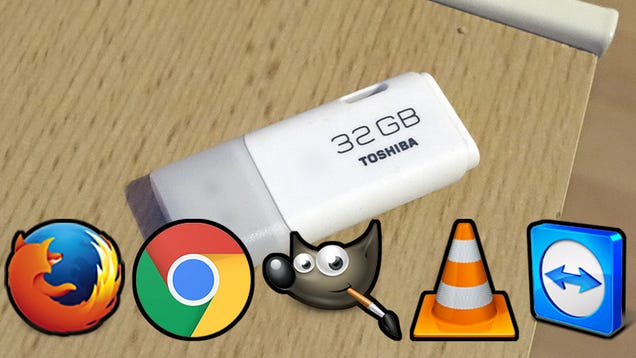

 The article was written by Jonah Lehrer, author of “How We Decide.” It threw cold water on works that dated back to the 1940s which had touted brainstorming as the supreme way to generate new ideas and to stimulate creative thinking.
The article was written by Jonah Lehrer, author of “How We Decide.” It threw cold water on works that dated back to the 1940s which had touted brainstorming as the supreme way to generate new ideas and to stimulate creative thinking.




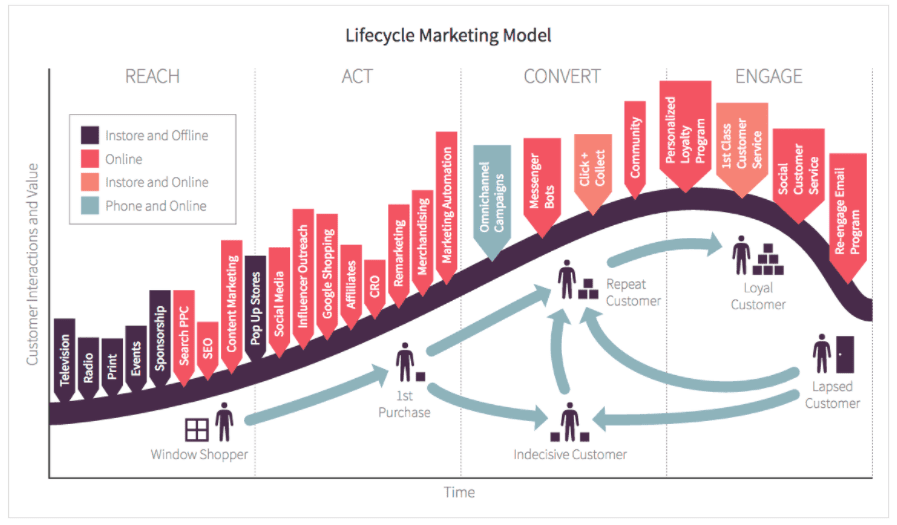
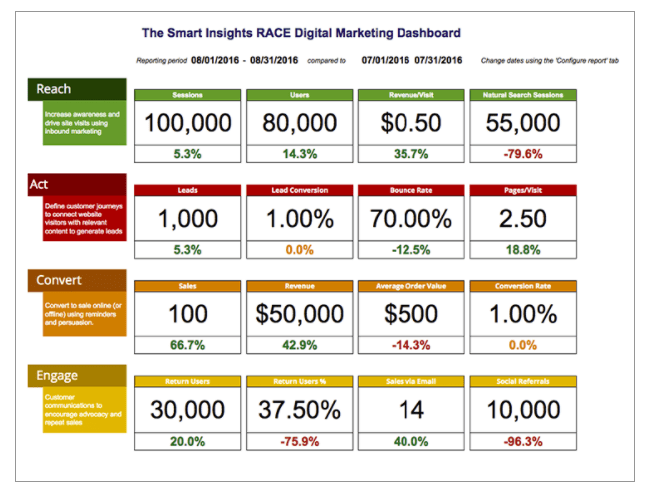
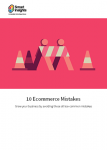

























![Free Download: 101 Sales Qualification Questions [Access Now]](https://no-cache.hubspot.com/cta/default/53/e97d6603-b40e-4085-ad55-0074b7351ead.png)
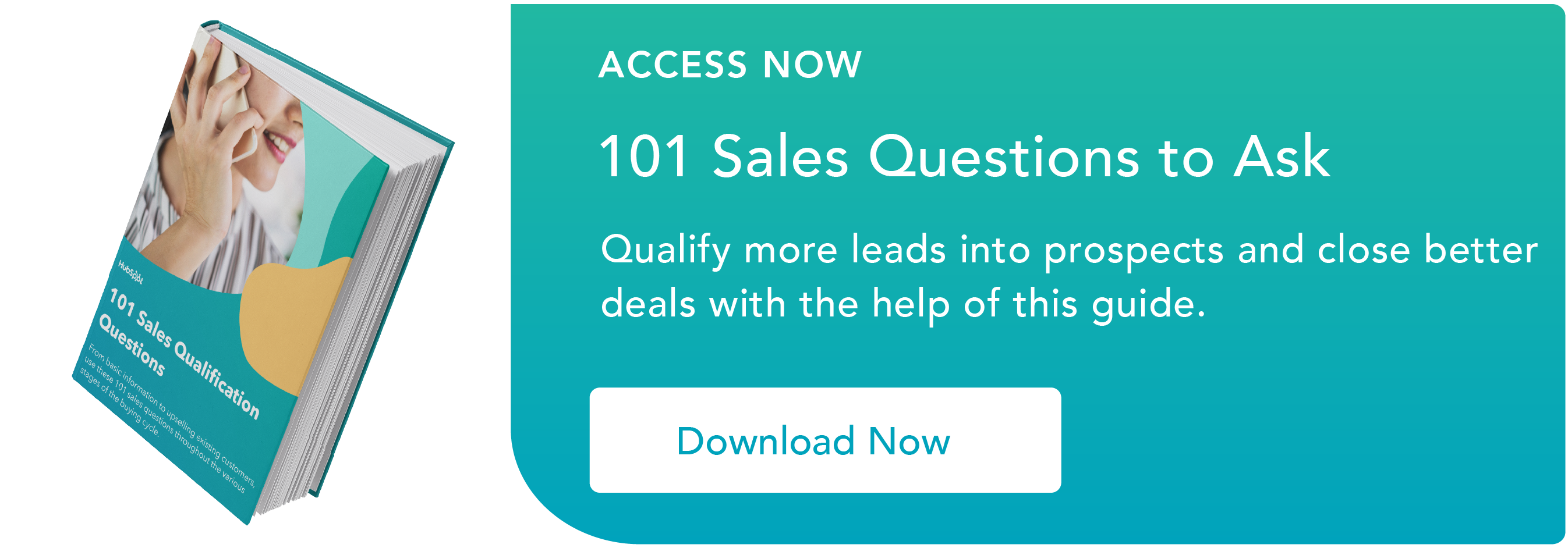

 With dynamic surveys, you can also provide your recipients with instant gratification by enabling them to see the immediate results of their input within the email. This comes in handy if you’re polling your subscribers and want to show them how their answers compare to those from other respondents. It’s quick and easy—for both you as the marketer to set up and the recipient to click and respond.
With dynamic surveys, you can also provide your recipients with instant gratification by enabling them to see the immediate results of their input within the email. This comes in handy if you’re polling your subscribers and want to show them how their answers compare to those from other respondents. It’s quick and easy—for both you as the marketer to set up and the recipient to click and respond.

























































 As a sales manager, director or VP, you may occasionally struggle to determine what is stopping your salespeople from meeting your standards.
As a sales manager, director or VP, you may occasionally struggle to determine what is stopping your salespeople from meeting your standards.











